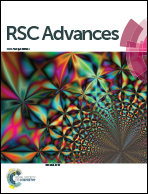Study on photoelectric characteristics of monolayer WS2 films
Abstract
It is important to determine the time-dependent evolution of the excited monolayer WS2, which will provide a basis for the reasonable design of optoelectronic devices based on two-dimensional transition metal dichalcogenides. Here, we made a simple and large-area photodetector based on the monolayer WS2, with high light sensitivity and fast response, benefiting from the special dynamics of carrier involving the exciton, trion, and charge. Moreover, we tested the relaxation behavior of the excited monolayer WS2 by employing transient absorption (TA). It was found that the multi-body interaction among exciton would occur after the density of pump photon increases to 3.45 × 1014 photons per cm2. The exciton dissociation accompanying the generation of trion would appear in the photo-induced relaxation process, which would be a benefit for the operation of this photodetector. Increasing the energy of the exciton is good for the generation of carrier by comparing the relaxation behavior of WS2 excited to A and B exciton states. However, the bound exciton relaxation, originating from the capture process of the defect state, would exist and play an unfavorable role during the functioning of devices.



 Please wait while we load your content...
Please wait while we load your content...